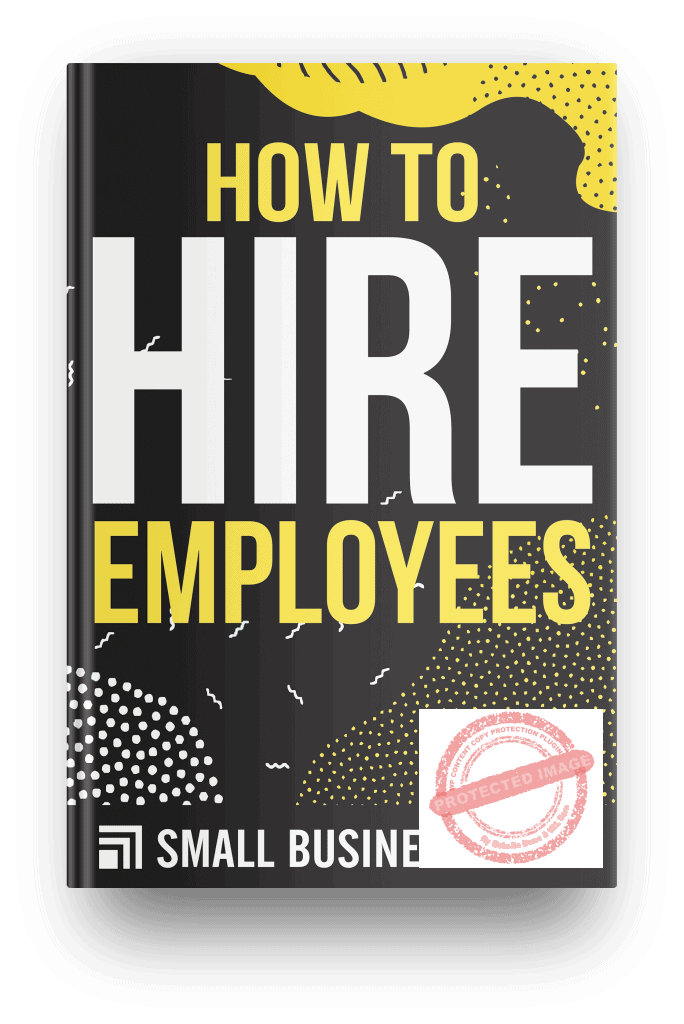Have you been charged with recruiting new employees for your organization and you don’t have an inkling of where to begin? This article provides guidance on how to hire employees in simplified steps.
To start with, you must understand that an HR department is vital to any organization’s growth and development.
It acts as the middleman between your company’s management and its employees.
If you are a small business owner, you might wear multiple hats including being your own HR department.
This happens.
HR handles your personnel’s concerns, from policy creation and implementation to benefits administration.
Its main function, though, is hiring employees for your organization.
Hiring someone who’s right for your job vacancy is crucial.
A new hire that is not suited to the job can be costly because it affects your company’s productivity.
This is particularly true for small businesses hiring their first employees.
Steps to Hiring Employees

Structure an effective process for hiring workers that will achieve the following objectives:
- Attract an increasing pool of candidates at a minimal cost.
- Weed out underqualified, as well as overqualified, candidates and select the best ones for your vacancies.
- Hire the right people who can adapt well to your company’s culture and core values.
- Identify applicants who will stay long with your company.
- Bring in people who can contribute to your organizational goals.
Hiring your first employee goes beyond the interview and the job offer.
It also involves manpower planning, onboarding, and regular performance appraisal.
Needless to say, hiring new employees is a taxing, time-consuming activity.
To meet the objectives of your recruitment, it’s important that you know each phase of the entire process.
1. Identify Your Manpower Needs.
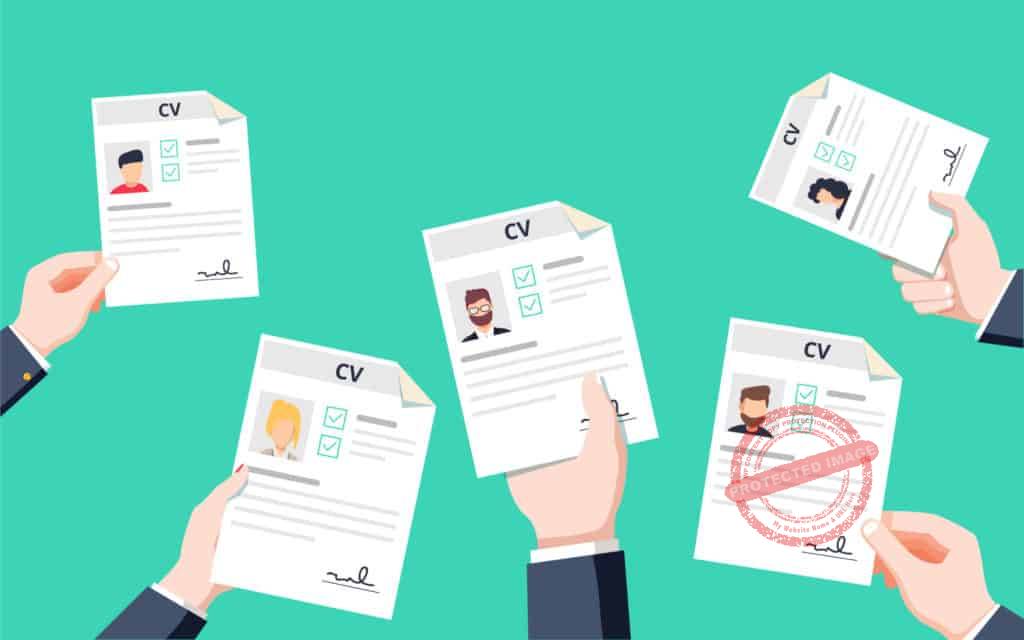
You have to know the kind of candidate you’re looking for.
Start with a structured organizational chart that will help you identify at a glance the following:
- What positions you need to fill.
- How many you intend to hire per position.
- Reporting relationships (their superiors as well as their subordinates).
Now, here are key considerations when you are hiring new employees:
- Why do you need a new employee?
- What will be his or her duties and responsibilities?
- What hard skills, as well as soft skills, should the candidate have in order to be successful on the job?
- How extensive will his or her interaction with other employees be?
2. Prepare the Job Description and the Person Specification.

These are the first things job seekers look for in your job posting.
If you get these documents right, you are sure to attract the most desirable applicants.
Job Description
A job description, or JD, is a document that lists the duties and responsibilities of a position. It includes the following:
Job Title
Avoid generic titles.
Your job titles should be precise such that an applicant can glean the nature of the job just from reading the job title.
Avoid internal lingo.
For example, using “junior” to state experience level is clearer than saying “Level II.”
Job Summary
Start with a concise but strong overview of your company and the job expectations.
Proceed with introducing your company and your brand.
You may also mention your company culture.
Finish up with a litany of reasons why people would love working for your company.
Also, don’t forget to include your location and contact information.
Duties and Responsibilities
Make your list brief and detailed.
Start your enumerations with verbs. Instead of saying, “responsible for promoting events,” say, “promotes events.”
 Be specific with job add-ons that the position and your business need.
Be specific with job add-ons that the position and your business need.
If you need a Marketing Associate that has to have knowledge of graphic design or web development, say so in the JD.
With this, a candidate understands early on if he or she qualifies or not.
You should emphasize the day-to-day requirements of the job.
This would give an applicant a clear idea of the activities he or she will be performing on a daily basis.
Furthermore, this is a good way to weed out candidates who’d know right away that they are not the right fit for the job.
Show reporting relationships
This will enable the candidate to understand his or her role.
Furthermore, he or she would be able to tell what contributions he or she could make to your organization.

Qualifications and Skills
Include a list of hard skills gained from education, previous employment, and training.
You may also say that you are on the lookout for some soft skills.
These may include a good work ethic, grace under pressure, and a take-charge attitude.
Soft skills are not usually written in a candidate’s resume.
You can probe into them later on in the interview process.
Be careful not to overload your skills list for an ideal hire.
You might drive away wildcard candidates in the process.
Include only the important skills.
The applicant could develop and hone the other skills you’re looking for when he or she is already hired.
Person Specification

The person specification (PS) is a list of traits you find desirable in your ideal candidate.
It describes the type of person who is likely to excel in the job.
It includes the required education, relevant training, and outstanding qualities.
Based on the PS, an applicant can determine whether he or she meets your job requirements or not.
This reduces the number of unsuitable candidates at the onset.
Furthermore, the specification ensures that all candidates are judged based on the same criteria.
It is also used as your basis for appraisals, staff development, and promotions.
What should you include in a person specification?

You should be clear about the core competencies the job requires.
They could be either essential or desirable.
A clear combination of the traits allows you to specify the type of person you are targeting to hire.
Competencies could include:
- Known languages – knowing a specific foreign language.
- Attainments – education, qualifications, experience, and managerial positions held.
- Aptitudes – creative thinking, analytical thinking, computer literacy, communication skills.
- Previous Experience – Determine what you are more particular about; the number of years or the level of expertise in a specific task?
You might be turning down a qualified candidate who has done a variety of work over a shorter period if you are keen on the length of employment only.
- Education and training – There are positions that ask for credentials or certificates as a legal requirement.
There are also those that require that the candidate have specific training.
3. Choose Where to Make Job Postings.

In-house search
For a small business hiring employees, internal hiring is a viable option.
You get to save on your recruitment cost.
Additionally, you are assured that the employee is already attuned to the company culture.
Online job sites
Your postings will be visible to thousands of potential job seekers.
So, you have to be patient while sifting through all the CV submissions.
Social media
LinkedIn has 500 million users and 100 million job postings.
Make your presence in social media worth the candidate’s time.
He or she is scrutinizing your business (to see if it’s the right company for him or her) as much as you’re sizing up that person to decide if he or she is hireable.
Recruitment process outsourcing
You can opt to transfer all or part of your hiring process to an RPO who is an expert on how to hire employees.
This way, you could devote more time to what you think are more pressing aspects of running your business.
4. Review Applications.

This is the stage where you skim CVs against the Job Description and Person Specification.
The art of resume skimming involves knowing what you should focus on when hiring workers.
Here are the green lights:
Work experience
For a senior-level position, look for somebody who has at least six years of experience in the same field.
For a mid-level position, indicate at least three years, junior-level jobs can be up to two years.
It’s imperative that you verify the certifications and credentials submitted.
Relevant keywords
Keywords are important to a big company filling up several openings, or to a small business hiring first employee.
Using keyword scans will point you to applicants with the right tools and skills.
Scan keywords based on your Job Description and Person Specification
Be alert for red flags as well. Here are potential deal-breakers:
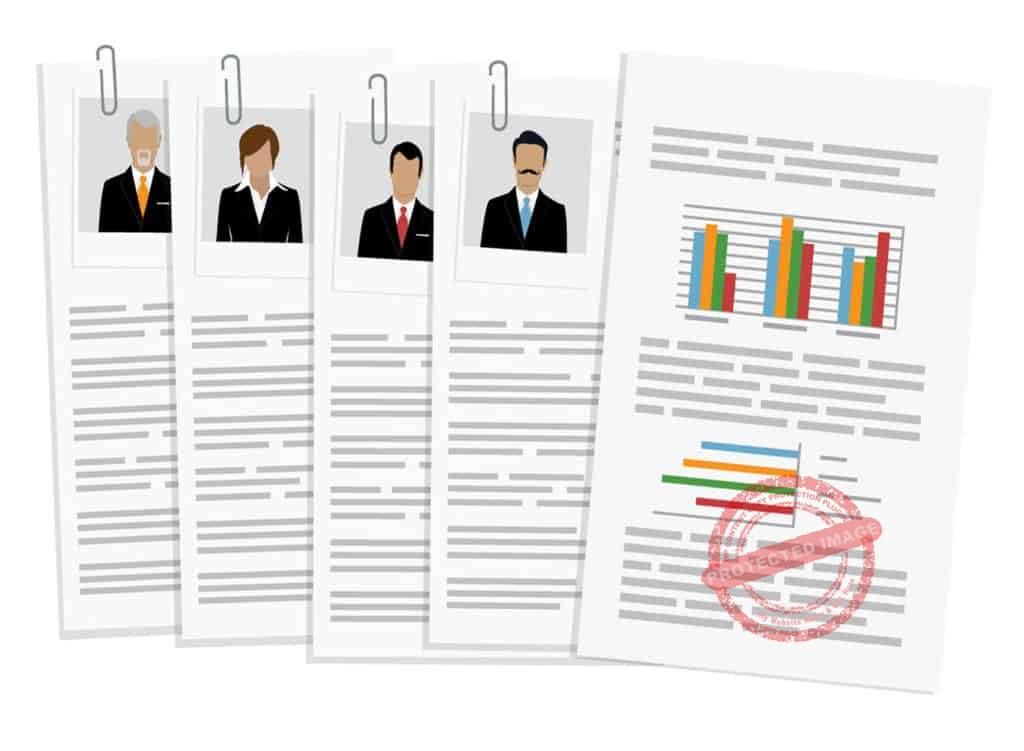
Unprofessionalism
The resume is a marketing tool for an applicant to put his or her best foot forward.
He or she should take all the time in the world to craft an impressive resume.
If that person can’t, how can you expect him or her to produce satisfactory outputs in the face of tight deadlines?
What makes a resume unprofessional?
Be wary of submissions that contain spelling errors and poor grammar.
Even typos are not justifiable.
A non-professional email address says a lot about the credibility of a candidate.
Unnecessary information such as physical characteristics is another tell-tale sign.
Attitude
This is an ingredient of professionalism.
Pay attention to the tone and language of the resume.
Consider those who are upbeat, honest, and confident.

Job hopping
Firstly, check if every position listed in the resume has inclusive dates of six months to a year.
Job shifts in short time periods show that the individual won’t stick around with you either.
Also, look for employment gaps as you review job histories.
You may think that these are negligible, especially if you consider the applicant as a star candidate.
It still is a good idea to ask the candidate to explain the time lapses during the interview.
After you’ve sorted the submissions, it’s now time to give those that meet your basic requirements a good scan.
Generic resume and cover letter
You can tell if the applicant has been sending out the same copies to different employers.
Favor resumes that are written with your posted job as the target end goal.
Any top applicant will customize his or her resume to emphasize his or her skills set you listed in your Job description and Person Specification.

Specific quantitative results
Your ultimate goal when hiring the first employee is to get somebody who will help you reach your corporate and professional goals.
Furthermore, you wouldn’t want somebody on your team who’d only embarrass you with their inadequacy.
Find individuals who have quantified their contributions in their previous employment.
Also, look for mentions of hard data, percentages, and amounts in the resume.
Overall, if you find a candidate who has demonstrated his or her worth in the past and has the numbers to prove them, go with that person.
5. Conduct Interviews.

This is the defining moment for every job hopeful.
Since it’s expected that the applicant will show up ready, you must be just as prepared with your probing techniques.
Here are a few interview tips when hiring someone:
- Before the interview, highlight items in his or her resume that you plan to clarify or probe into.
- Keep the conversation relevant to the role and see how determined the applicant is about bagging the job.
- The applicant is looking to see if your business is a good place to pursue his or her career.
Hence, it is important that he or she is made aware of the benefits of the position and your company.
It’s also important to educate the prospective employee of the company’s culture at this point.
This would help the interviewee determine if he/she would fit in properly.
After you’re done confirming hard skills, it’s time for you to get an insight into the applicant’s soft skills. Check if they could give you solid replies to the following:
- Ask about an unfamiliar task that they were required to learn recently.
What methodologies did he or she use to simplify and expedite the learning process?

- There must have been a time in his or her past when he or she excitedly presented to his or her boss what he or she believed was a bright idea — only to be rejected.
How did he or she deal with it?
- What are their thoughts about being asked to do overtime work on short notice?
- What would they do if they were given several projects with similar deadlines?
- If he or she has been a point person on some projects, ask about the challenges he or she had to overcome as the lead person in charge.
- What does he or she consider as his or her biggest failure and what lessons did he or she learn from it?
- Was there ever a time when they were required to do something that clashed with their work principles?
What was their initial reaction?
How did they resolve the issue?
- How do they keep themselves updated on recent trends related to their expertise?
6. Do a Background Check.

A recruitment agency once did a thorough background check of all the CVs they received for an entire year.
They realized that about 24% of the CVs contained fabricated information.
The bottom line is, It pays to check references.
7. Prepare the Contract and Make the Job Offer.
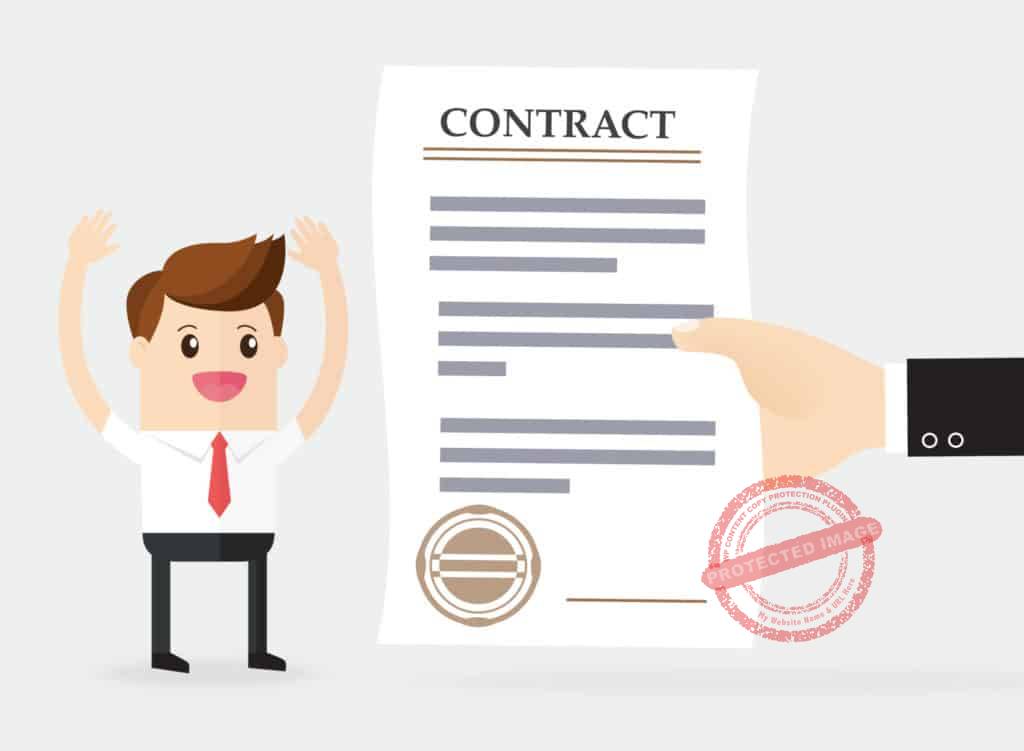
If everything is in order, draw up an employment contract.
It should state the position title, department, working hours, compensation package, and benefits.
Attach a copy of the JD to the contract for reference.
You may opt to have the candidate sign a Non-Disclosure Agreement (NDA).
This depends on how sensitive your trade secrets and other business information are.
8. Proceed with Onboarding.
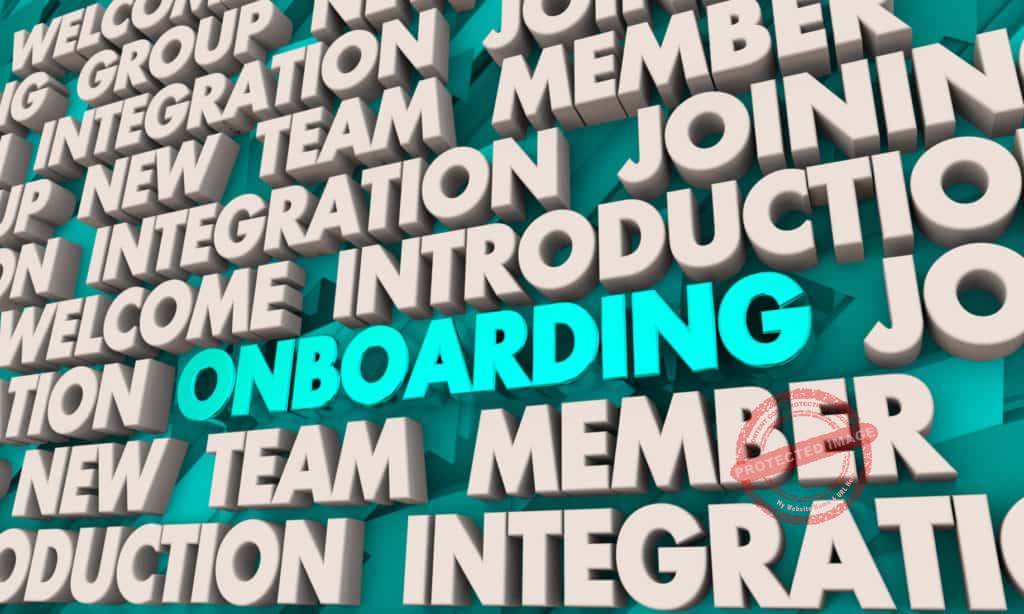
Onboarding is also known as induction, training, or organizational socialization.
Furthermore, it ensures that your new employee gets to learn the skills necessary to perform his or her job.
It’s a way for new hires to be integrated into the organization, its members, and its culture.
Some methods of onboarding are lectures, meetings, videos, and printed materials.
Don’t think of onboarding as a waste of time and resources. In fact, onboarding leads to positive outcomes for new employees, such as:
- Remarkable job performance
- Higher job satisfaction
- Reduced work-related stress
- Stronger organizational commitment
- Decreased turnover rate

Here’s a recommended first-day onboarding checklist you can try out when hiring employees:
- Get the basics right.
Do they know where the toilets are?
What the arrangements are for lunch and breaks?
- Take them out for lunch and talk about non-work stuff.
You’ll discover more about an employee during small talk over mealtimes.
This is also an opportunity for them to warm up to their peers and colleagues.
- Arrange a general staff meeting in the first week so they’d get the chance to meet everyone.
The meeting will help to give them an overview of where they fit in the “grand scheme of things” in your organization.
Expect them to hit the ground running after that get-together.
How do you create an employee onboarding plan that’s agreeable to your new employees?

Prepare your onboarding schemes even before the new employees arrive because you’ll always be busy any week your new employees set foot on your door.
It’s a good idea to start your onboarding plan as soon as you put out your job posting.
Think ahead about what tools they’d need.
Also, you’ll have to prepare workflows they could refer to.
Furthermore, list all work-related stuff that they need to know, no matter how mundane.
Additionally, identify a point person who can best assist them during the first couple of weeks.
Get feedback from new hires about your onboarding mechanism so that you’d be more prepared for the next batch of new hires.
Finally,

The entire recruitment process is not an easy task.
Fortunately, there are steps to hiring employees to make it simpler and more streamlined.
You’d soon realize that time-tested techniques on how to hire employees will help you find the right candidate who would stay long with your company.
It would also help you hire employees that are both efficient and productive.
Click on Buy Now For a PDF Version of This Blog Post
 |
